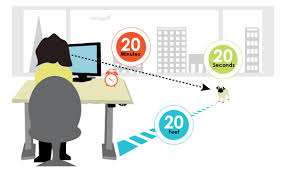In today’s world, technology is everywhere. One might even say that it runs our lives. From our computers, smart phones, tablets and gadgets, most people are around technology every waking moment. And, for children, classrooms are becoming outfitted with greater amounts of technology to support teaching curriculum and to serve as a new learning style. It is estimated that 40% of teachers use computers for instruction, and at least one computer is in 97% of all American classrooms.
In honor of Children’s Eye Health and Safety month, we wondered how much technology time children should have both in and out of the classroom.
Don’t Start too Young
Parents should slowly introduce their children to technology. Since 2009, the American Academy of Pediatrics and the White House Task Force on Childhood Obesity (2010) have recommended waiting until the child is at least preschool age, or over the age of two years old, to introduce the child to technology.
After the age of two years old, it is recommended that children have no more than one to two hours of total screen time per day, and this includes all the way up to teenagers. A two hour limit is unrealistic for teenagers, who require screen time for homework tasks, but younger children should prevent straining their eyes for as long as possible.
For youngest technology users (under five years), experts believe that they are not being given a chance to explore the world around them. This could result in a skewed reality and inability to differentiate between technology and the real world. For young children, the emphasis in research has been less about the health and safety risks, although those should be assessed, and more about the development of learning about the world around them.
Digital Eye Strain
According to a survey by the American Optometric Association, almost 1/3 of children use technology for a full hour before taking a visual break. Optometrists are concerned that blue light rays emitted from electronic devices could affect and age the eyes. When technology is used for extended periods of time, the individual could experience what is called Computer Vision Syndrome (CVS).
The American Optometric Association defines CVS as eye and vision-related problems that result from prolonged computer use. The most common symptoms of CVS include:
- eyestrain
- headaches
- blurred vision
- dry eyes
- neck and shoulder pain
These symptoms are often caused by:
- poor lighting
- glare on the computer screen
- improper viewing distances
- poor seating posture
- uncorrected vision problems
- a combination of these factors
Combat Eye Strain
Here are a few ways to combat the negative effects of eye strain:
- 20-20-20
Children and adults alike are encouraged to practice the 20-20-20 rule to decrease the effects of eye strain. Every 20 minutes, spend 20 seconds looking at something 20 feet away.

- Practice good posture and viewing distance.
Whether in the classroom or in an office, you should have a comfortable working posture where your joints are aligned. Optimally, when working on a tablet or computer, the screen should be 15 to 20 degrees below eye level (about 4 to 5 inches) and 20 to 28 inches from the eyes.
Smart phones — probably the singular piece of technology most frequently used with poor posture — should be held up at eye level and approximately 16 inches away from the face.
- Remember to blink!
This one seems obvious, but blinking can improve focus and reduce dry eyes. If you are suffering from dry eyes, drops can also help.
For some more eye health tips, check out this article from TIME.
Do you find that your back or neck hurts after using technology? How many hours do you spend watching TV, using your smartphone, or working on the computer?


